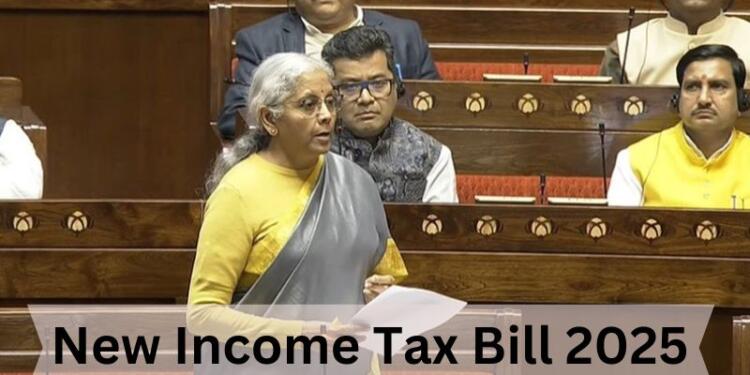Finance Minister Nirmala Sitharaman on Thursday (13th February) tabled the Income Tax Bill 2025 in Parliament. The bill aims to replace the sixty-year-old Income Tax Act of 1961 and streamline India’s tax structure by cutting red tapeism, creating clarity, and improving compliance on the part of taxpayers. With a streamlined structure and improved readability, the proposed bill is expected to benefit individuals and businesses alike.
The New Income-tax Bill, 2025 has been tabled in Parliament.
The Bill aims to simplify the language of the existing law as amended to date.
The Bill is available at our website https://t.co/z0wOo162Xq
Our FAQs address common queries regarding the objectives and the outcome of… pic.twitter.com/txfke5wKo8
— Income Tax India (@IncomeTaxIndia) February 13, 2025
FM Sitharaman noted that the new Income Tax Bill 2025 be sent to a newly-constituted Select House Committee stating, “The terms and conditions regarding the committee will be decided by [Speaker Om Birla].”
She further added, “The committee will submit its report on the first day of the next session”.
While presenting the Union Budget 2025, the Finance Minister had said, “The new bill will be clear and direct in text with close to half of the present law, in terms of both chapters and words. It will be simple for taxpayers and tax administration to understand, leading to tax certainty and reduced litigation.”
Key features of the New Income Tax Bill
The new bill is designed to be simpler, shorter and reader-friendly. It is expected to have 536 sections, 16 schedules, and 23 chapters. The new 622-page bill would be more structured than the old legislation. It would be almost half of the current law, as the existing Income Tax Act of 1961, contained 880 pages when it came into existence.
The Income-Tax Bill, 2025 has been introduced in the Lok Sabha today.
The Bill aims to simplify the tax system for all and is built on these core “SIMPLE” principles:⬇️ pic.twitter.com/bX4Zc1ImdR— Income Tax India (@IncomeTaxIndia) February 13, 2025
The proposed bill contains simpler sentences, tables, and formulae for the reader’s ease of use and clearly outlines the rights and obligations of the taxpayers.
1. Simplification and Reduction in Complexity
The new bill is aimed for the simplification of tax laws. The Income Tax Bill consists of 23 chapters, 16 schedules and 536 sections. It looks concise in front of the previous 880-page Income Tax Act, 1961. This reduction in legal complexity is expected to make tax laws more accessible to the common taxpayer.
2. Introduction of ‘Tax Year’
The bill substitutes the term’ assessment year’ with ‘tax year’ and brings it in line with the financial year running from April 1 to March 31. It may end the confusion of the taxpayers over heavy terms and streamline record keeping and tax filing process.
3. Improved Clarity and Readability
The bill proposes to cut out redundant and vague provisions. For instance, the use of the word ‘notwithstanding’ found extensively in the Income Tax Act of 1961 would be replaced by ‘irrespective’ in order to achieve greater clarity. The inclusion of systematic tables and formulae for the simplification of taxpayers’ rights and responsibilities.
4. Tax Deduction and Salary Component Simplification
Some tax deductions like standard deduction, gratuity, and encashment of leave are dispersed over several sections. The new bill clubs them all under one section, making it easier for salaried people to comply with taxes. The businesses also get easier depreciation calculation methods.
5. Reorganization of Tax Sections
The bill renames and amends tax sections for easier readability. For example, the existing Income Tax Act subjects the filing of income tax returns to Section 139 and the new tax system to Section 115 BAC. The new bill will simplify these provisions to make filing of taxes more efficient and easier to understand.
6. Well Defined Taxable Income and Virtual Digital Assets
In order to clear any ambiguities, the bill clearly defines foreign income, taxable income, and virtual digital assets (VDAs). It is expected to avoid confusion among taxpayers and ensure more clarity about the taxation on cryptocurrency.
7. No Adjustment in Income Tax Slabs and Filing Dates
Despite the bill bringing several changes, It is expected to maintain the current income tax slabs, capital gains tax provisions, and due dates. This choice is made to bring stability to the taxpayers so that they can manage their financial duties without any sudden changes.
The Income Tax Bill 2025 is a landmark reform that aims to create a more efficient and transparent taxation system in India. If the new Income Tax Bill becomes Act, it will be applicable from April 1, 2026, the start of FY 2026-27. The bill not only simplify tax laws, reduce litigation but also enhance compliance.
As the bill is tabled in Parliament today, all eyes will be on its journey toward becoming law, shaping the future of taxation in India.































